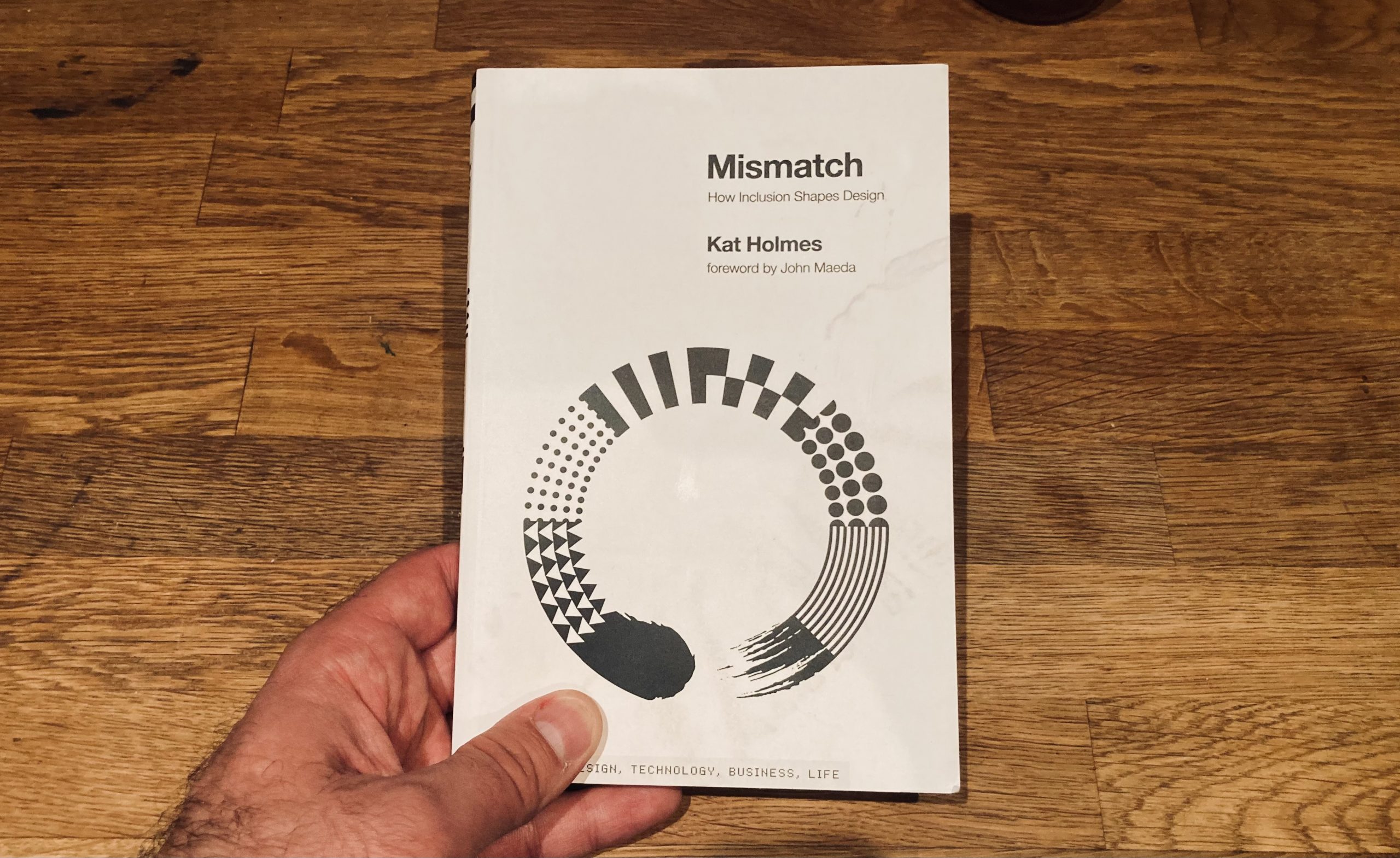Book: Mismatch, How Inclusion Shapes Design

The central thesis of this book is that designers should look at disabilities not as health conditions, but instead as mismatches between the designer and those the designers are creating for. Mismatches come in a lot of forms, and can play out as physical, mental, or cultural.
A good example from early in the book deals with how men and women learn to use software in different ways. Researchers at The GenderMag identified a spectrum of ways that humans learn how to use software. One end was a guided approach, either from a human or the software itself. On the other end was to jump in and learn by trial and error. Users were interviewed and placed on this spectrum.
Writes Holmes:
The research showed that people who identified as women distributed relatively evenly across this spectrum. There was a wide range of learning styles that different women used when learning new software. People who identified as men, however, clustered heavily toward the end of the spectrum for tinkering and troubleshooting solutions.
This is an important distinction, and something that is easy to miss if there is a mismatch between software developers and the people who use our software.
One last great anecdote I wanted to share from this book that really stuck with me involves the United States Air Force research of pilot dimensions in order to better design airplane cockpits, which shows how sometimes designing for everyone can end up designing for nobody:
In the 1940s, the first fighter jets were designed to fit the average pilot. The USAF measured hundreds of bodily dimensions across thousands of pilots and used the averages of that data to design the instruments of the flight deck, or cockpit.
Every feature of that flight deck was fixed in place, without adjustability. The assumption was that any individual pilot could adjust himself to overcome the gap in reaching any element of the fight deck that wasn’t a perfect fit for him.
However, the Air Force was experiencing a high rate of crashes that couldn’t be attributed to mechanical failure or pilot error. A lieutenant and researcher, Gilbert Daniels, studied just ten of those human dimensions that were used in the design of the original fight deck. He measured four thousand pilots to confirm how many of them fit all ten dimensions.
The answer was zero.
Tags: Design